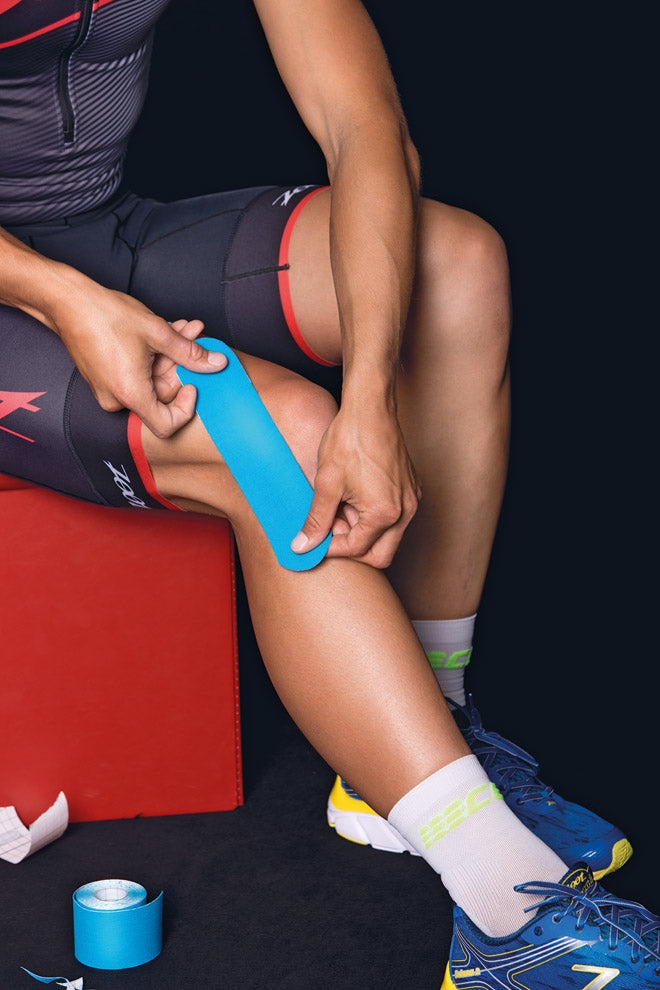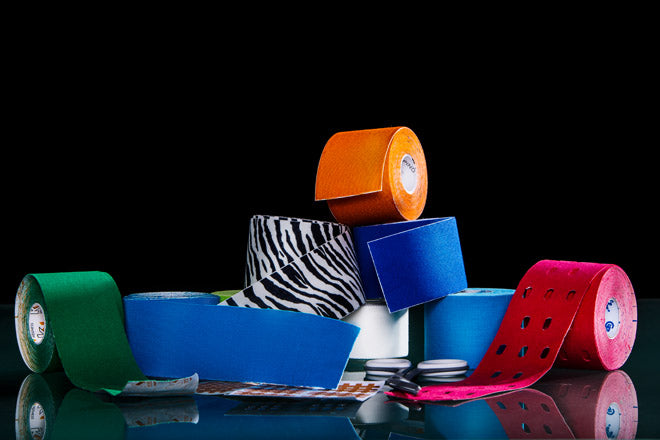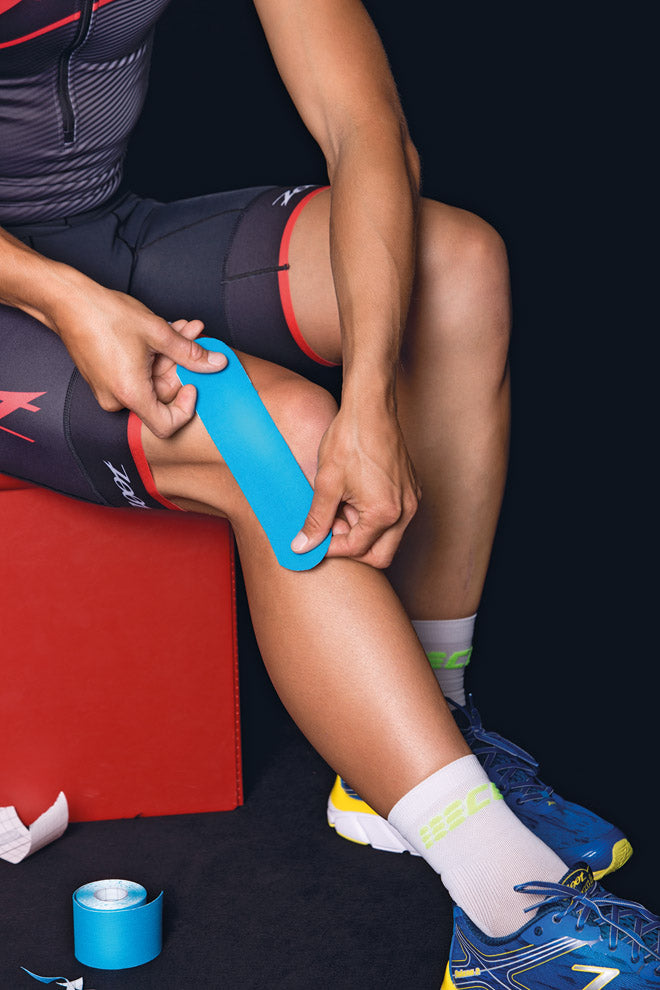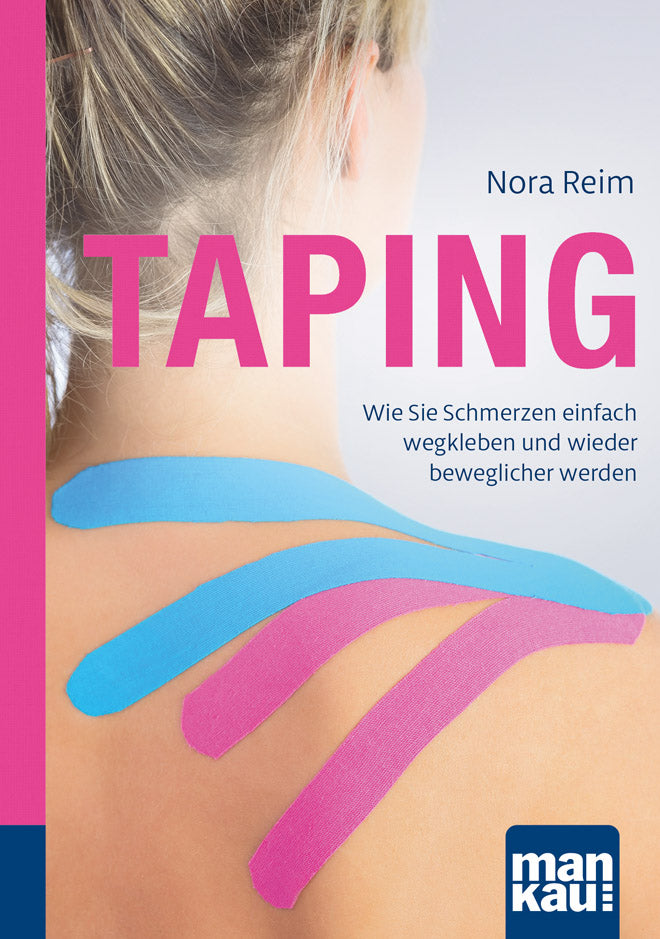
Taping – trend or therapy?
Taping – trend or therapy?
Thecompact guide explains the effect and possible uses of the colorful adhesive plasters
Nora Reim sees her new book on the technique of taping as a practical guide to self-help. With regular practice, a little manual skill and a pinch of tact, anyone can learn taping.
Effective body decoration
Recreational and competitive athletes are constantly at risk of injury: the spectrum of complaints ranges from torn muscle fibers in the calf and thigh to trauma to the ankle and hernias. But even a normal office job often results in stiff joints, a tense neck or back pain. Physiotherapists are therefore increasingly treating their patients not only with ice spray, compresses and massages, but also with tapes - the English term for the colorful and elastic adhesive tapes has now become common in this country too.
What at first glance looks like mere decoration is only laughed at until you have experienced the beneficial effects of tape on your own body. Motivated by her first taping successes in her family, sports journalist Nora Reim researched the history of the colored stripes and wrote a compact guide that presents a practical and inexpensive addition to conventional physiotherapy with numerous, detailed illustrated instructions and helpful background information.
Relieve and prevent pain
The most commonly used method is so-called Kinesio taping (Greek kinesis = movement), which was developed in 1973 by the Japanese doctor Dr. Kenzo Kase. In contrast to rigid taping with rigid bandages, elastic strips are used. They allow the wearer maximum freedom of movement without putting strain on the skin. If Kinesio tape is applied correctly, it has a beneficial effect on the wearer's body: It relieves acute and chronic pain by removing tension (tone) from the body. This in turn means that muscles and nerves are enriched with more nutrients and oxygen. In addition, blood can flow better and air can circulate more easily.
Kinesio tape not only relieves pain, but also prevents injuries. Many competitive athletes make use of the prophylactic effect by applying adhesive tape to sensitive areas of their body before competitions. The tape provides stability for the respective sport and enjoyment of movement: you feel more capable because you don't have to fear injury.
Practical taping tips
To ensure that the tape is as comfortable as possible on the body, it should be applied in such a way that it neither burns nor presses or even constricts the skin. The length of time the tape is worn depends on its use: anyone who does intensive sport with the tape on their skin, sweats a lot and showers every day will get less out of the tape than someone who hardly moves at all.
Tapes are available in different designs and colors. Each color is said to have a specific effect that is intended to support the main function of the adhesive tape. Basically, lighter colors reflect more light and thus lower the body temperature under the tape. Darker colors, on the other hand, absorb more light and thus increase the temperature under the skin. Some top athletes even swear by the special effect of certain colors such as blue, pink and black. Although the costs for the treatment are not recognized by health insurance companies, taping is comparatively very inexpensive and anyone can learn the taping technique themselves - even without prior medical knowledge. "The more often you tape yourself, the better your technique will become," assures the author.
Book tip:
Nora Reim: Taping. Compact guide
How to simply stick pain away and become more mobile again. Mankau Verlag, 1st edition February 2017, paperback, 11.5 x 16.5 cm, full color, 126 pages, 8.99 euros (D) / 9.20 euros (A) ISBN 978-3-86374-361-1.
Link recommendations:
More information about the "Taping" guide
More about Nora Reim
To the Internet forum with Nora Reim











